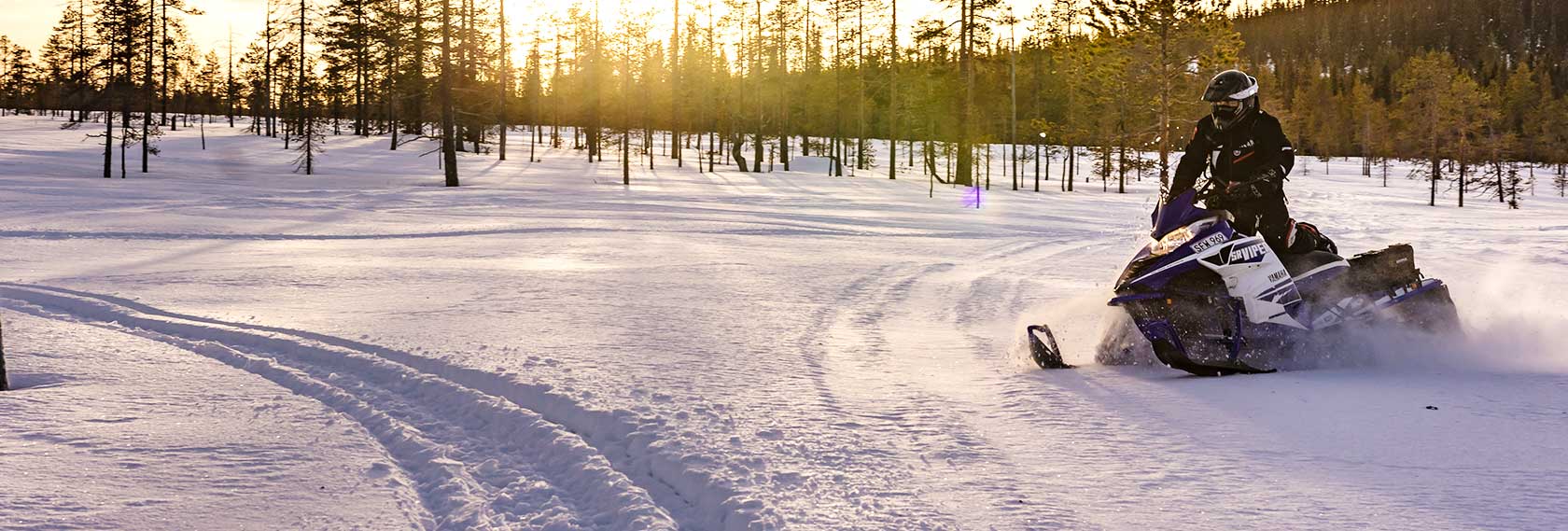

For years I had a two-place enclosed snowmobile trailer and never gave much thought to towing and payload capacity. As much as I enjoyed the nimbleness of a compact trailer, my two teenage boys informed me that I should spend more of my hard-earned cash on a nice four-place trailer. That way I could haul their snowmobiles, too. Mind you, they didn’t even have snowmobiles yet but I’d promised them sleds when they reached legal age. It was time to pay up.
Winter arrived and we had a few small storms followed by a good 18-inch dumper. We were ready to roll. While hooking up the new 4-place trailer I became a bit concerned about all the snow on the roof. Beyond the painfully obvious dangers of injuring those driving behind us, it’s illegal and could earn a magic ticket.
Snow build-up on the old two-place wasn’t a big deal because of its slanted shape. It was low and easy to brush off. Not this new monster, however.
My sons dutifully climbed onto the trailer roof and shoveled about two-feet of compiled snow from the 8×22-foot rolling aluminum shed. It was slick underneath all that white stuff, as a good inch of ice had formed from thawing and refreezing of earlier snowfall.
While unloading at our destination another four-place trailer arrived and parked next to us. We were chatting when the gent complemented us for shoveling off the roof. He then went on to explain how he found out the hard way that it was a necessary chore. I figured he got ticketed.

Surprisingly, that would have been a wet kiss on the lips by Kate Upton compared to the major mechanical failure he suffered. It seems the excess weight of snow on the roof had overloaded the trailer’s maximum Gross Vehicle Weight Rating, and snap went the axles. As unbelievable as that sounds, the math doesn’t lie.
My Blizzard dual-axle four-place snowmobile trailer has a GVWR of 7,000lbs (two axles at 3,500lbs each) and a dry weight of 2,500lbs, fully equipped with options. That leaves a 4,500lb payload capacity, which is more than enough. Check your trailer towing specs, as there are major variations between makes and models.
Based on published reports I’d estimate each sled, fully loaded with accessories, fuel, oil and a filled trunk bag, hit the scale at around 625lbs. We’re talking 2,500 pounds of sleds, that doesn’t even account for all the snow stuck in the track and tunnel from the previous ride.
We typically throw our riding gear in the trailer during a trip, I’d estimate about 25lbs per person, for 100lbs. In addition, we have tools, a few gallons of oil, spare carbides, a 5-gallon gas can, and other odds and ends that easily total 250 big ones. Loaded for a road trip, the trailer has 1,650lbs of reserve towing capacity left. Excellent, we can take the baby elephant, too!
Note: 7,000lbs Maximum GVWR
| Trailer Dry Weight: |
2500 |
| Four Snowmobiles: |
2500 |
| Gear and Other Stuff: |
350 |
| Total: |
5350 |
| Available Capacity: 7,000 – 5,350 = 1,650lbs |
While snow varies from fluff to wet cement, most experts agree a cubic foot of settled snow weighs 15lbs, on average. My shovel agrees. If the area of the trailer roof is 187 square-feet, that means a foot of snow adds an additional 2,805 lbs of worthless ballast. Dangerous is a better term, as the trailer is now overweight by more than 1,000 pounds. Now factor in the inch of ice, at 21lbs per square foot, for another 888 pounds. We are currently overweight by one 1993 Mazda Miata!
Not only are the axles over the limit but so are the tires and brakes. Hold on to that steaming cup of Joe, you may have unwittingly exceeded the towing capacity of your truck with the additional 3,700 pounds of ice and snow you are now schlepping around. Throw in whatever fudge factor you want -“my truck is underrated” or “my trailer is heavy duty”- this is a ton of extra blubber to be hauling on snow-covered roads in zero-degree temperatures.
| Loaded Trailer: |
5350 |
| Foot of Snow on Roof: |
2805 |
| Inch of Ice on Roof: |
888 |
| Total Weight: |
9043 |
| Trailer Max GVWR |
-7000 |
| Dangerous Overload (pounds) |
2043 |
Now that I scared the hell out of you, take a few minutes to read the specification label on your trailer. Figure out the GVWR of the axles, the dry weight of the trailer, and calculate the payload capacity. Be certain the tire load matches the GVWR by multiplying the maximum load written on the sidewall by the number of tires on the trailer. It should equal or exceed the GVWR. Check the tire pressure while you’re at it.
Regardless of the trailer type or size, you should do the math, and always remove snow from the top of the trailer. All told, it will tow easier, you’ll get better mileage, and it will be far safer going down the road. Plus, you may avoid a conflicting encounter with law enforcement and save a bundle on the axle replacement program.

Related Story: Complete Trailer Axle Fail